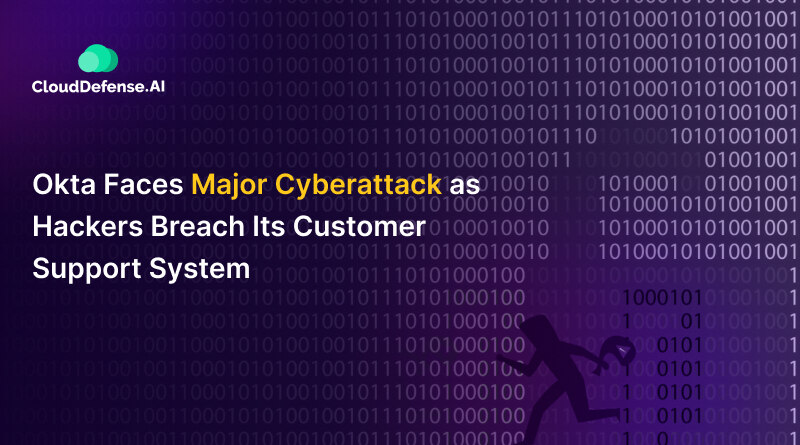In a recent cybersecurity incident, Okta Inc., a prominent US-based cybersecurity firm specializing in user authentication services, disclosed an alarming data breach that occurred two months ago. The breach, initially thought to impact only about 1% of its customers, has now turned out to be much more extensive, affecting all users within Okta’s customer support system.
Okta manages authentication services for numerous corporate clients, including the Microsoft-backed OpenAI. The company confirmed that hackers compromised its customer support system, gaining unauthorized access to its users’ sensitive information.
What Led to the Breach?
While Okta publicly disclosed the breach, the threat actor’s specific method or entry point to gain unauthorized access remains undisclosed. Despite the breach occurring in October, Okta has persisted in its investigation, diligently analyzing the actions taken by the threat actor to shed light on the details of the data breach.
Upon re-examining the incident, Okta discovered that the threat actor had run and downloaded a report on September 28, 2023, at 15:06 UTC. This report contained sensitive information about Okta customer support system users.
The information included fields such as Created Date, Last Login, Full Name, Username, Email, Company Name, User Type, Address, Last Password Change or Reset Date, Role Name, Role Description, Phone, Mobile, Time Zone, and SAML Federation ID.
While most of the fields in the report were blank, they did contain the names and email addresses of all Okta customer support system users. More importantly, the report did not include user credentials or highly sensitive personal data. For 99.6% of users, the only information recorded was their full name and email address.
The current incident came to light when it was determined that the threat actor’s running an unfiltered view of the report led to a larger file size than initially analyzed by Okta. This discrepancy in file size prompted Okta to conduct additional analysis, eventually revealing that the report contained a list of all customer support system users.
How Does the Breach Affect Okta’s Users?
The potential risk arising from this breach is the increased likelihood of phishing and social engineering attacks targeting Okta customers, particularly those using the support platform. Considering this, Okta recommends that all customers, even those already using multi-factor authentication (MFA), use phishing-resistant authenticators to be more proactive.

Apart from that, Okta customers can also implement continuous monitoring of their system by regularly reviewing security logs and reports within the Okta admin console. This includes tracking user activities, access logs, and authentication events.
Additionally, leveraging security features, such as anomaly detection and alerts, can provide real-time notifications of suspicious activities. Regularly updating and enforcing security policies, conducting periodic security audits, and staying informed about Okta’s security best practices contribute to a proactive approach to maintaining a secure environment.
Is It the First Time Okta Got Breached?
Okta has faced multiple cyberattacks in the past, and the most recent incident is not the first of its kind. In the previous year alone, Okta faced four significant cyberattacks, including one by a hacking group that shared screenshots of breached Okta systems on Telegram. Such incidents compound the recurring challenge for Okta, highlighting persistent vulnerabilities and emphasizing the urgency of robust cybersecurity measures.
What Measures Could Have Prevented Such Cyberattacks?
To prevent the security incident involving unauthorized access to customer support system data, Okta could have implemented several measures. These measures generally apply to similar companies in the identity management and tech space
Enhanced Access Controls
Implementing more robust access controls and monitoring mechanisms to detect and prevent unauthorized access to sensitive data. This includes stricter user permissions, role-based access controls, and regular audits of user activities.
Improved Filtering and Templating
Ensuring that reports and templates within the customer support system are appropriately filtered and restricted to display only necessary information. Regularly reviewing and updating these filters to align with security best practices and evolving threat landscapes.
Encryption and Data Protection
Employing strong encryption methods to protect stored and transmitted data. This adds an extra layer of security, making it more challenging for threat actors to extract meaningful information even if unauthorized access is gained.
Employee Training and Awareness
Conduct regular security awareness training for employees to recognize and report phishing attempts and social engineering tactics. This helps in building a human firewall and reduces the likelihood of successful attacks that exploit user information.
Multi-Factor Authentication
Promoting and enforcing the use of multi-factor authentication, especially for users with administrative privileges. MFA adds an extra layer of security by requiring additional verification beyond usernames and passwords.
Continuous Monitoring and Analysis
Implementing continuous monitoring and analysis of system logs and activities to identify any deviations from normal behavior quickly. This can help in detecting anomalies and potential security threats before they escalate.
Solutions like Hacker’s View™ offer a unique perspective on the potential attack surfaces and a glimpse into the network’s vulnerabilities through the eyes of a hacker. This in-depth analysis ensures that every potential vulnerability is brought to light, making organizations put effective mitigation strategies in place proactively.
The Importance of Proactivity: Safeguarding Against Cyber Attacks
In the wake of the Okta breach, an obvious message echoes through the world of cybersecurity—even industry leaders can face sophisticated cyberattacks, thereby affecting extensive user bases. As cyberattacks occupy the headlines very often, having a solid defense isn’t a one-off thing—it’s an ongoing, ever-adapting effort. Stay ahead until you keep your digital assets in the safest zone possible.
CloudDefense.AI’s Chief Ethical Hacking Officer, Hieu Minh Ngo, has a hot take on this: “The Okta breach illuminates a critical vulnerability in the realm of cybersecurity—underscoring that even robust systems can be compromised, impacting extensive user bases. It serves as a stark reminder for companies to evolve their security protocols perpetually and for users to remain ever-vigilant.”
So, there you have it. Cybersecurity is a game that’s always evolving. If you want to keep your data secure, you’ve got to be on your toes. Keep learning, keep evolving, and don’t slack on the security front. That way, you’ll be ready for whatever curveballs the cyberworld throws your way.







